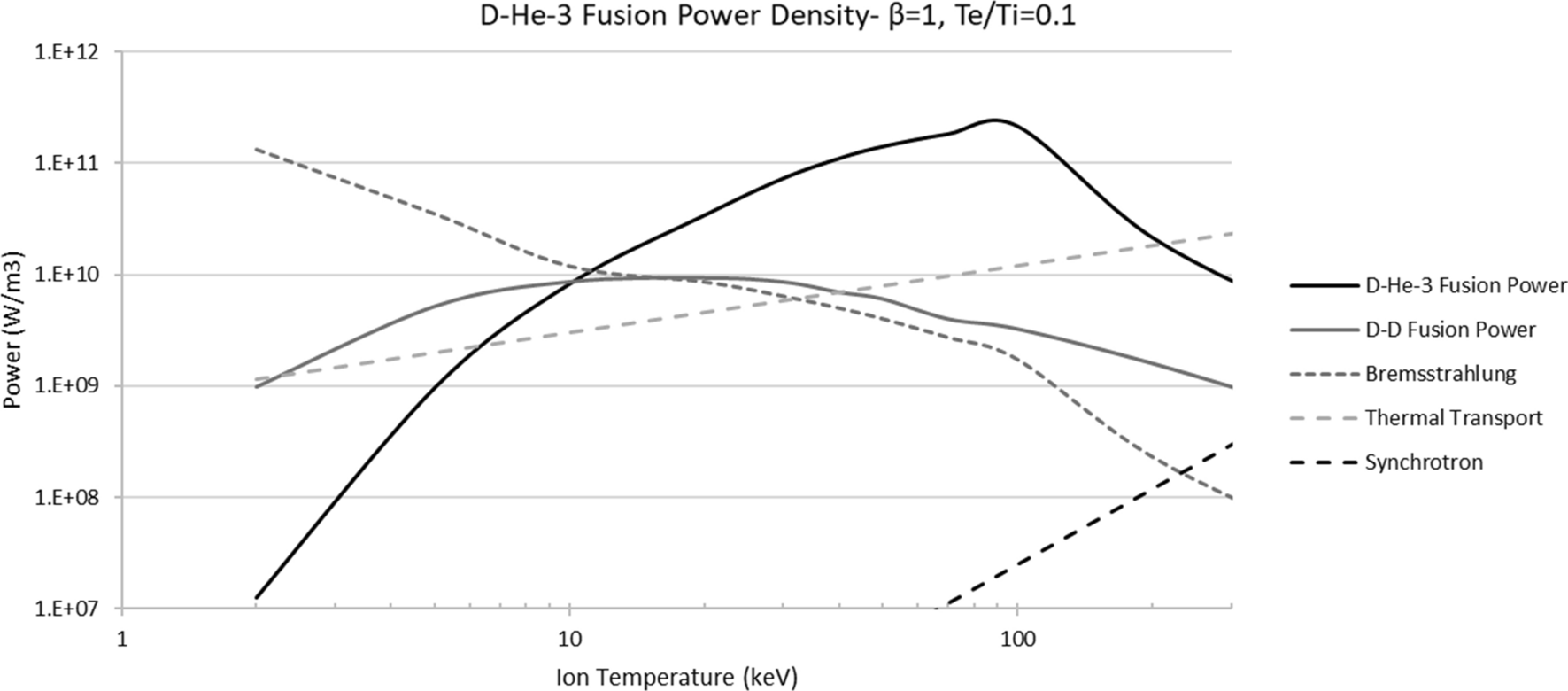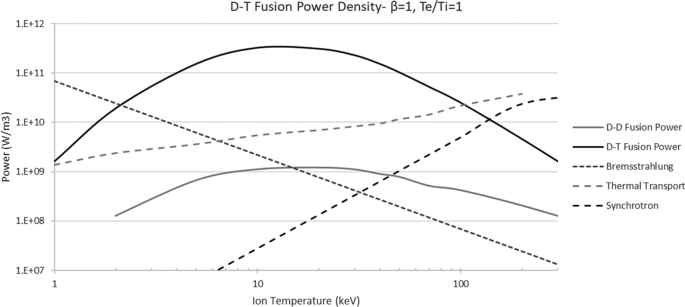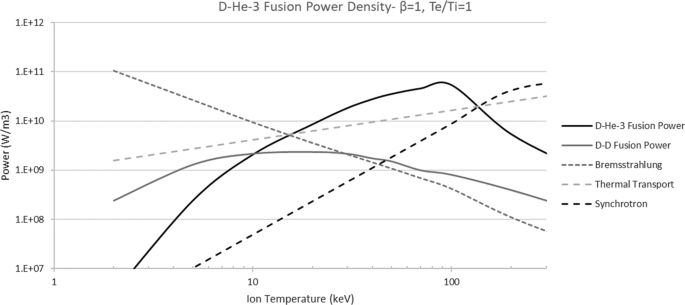Haha, yes that's true, I hadn't thought about that. You could capture the helium atom and its 3.5MeV, but as Skipjack notes the 14.1 MeV neutron would tend to melt the walls. Might be okay for a few pulses, though. I can see how that might be worth doing as a science experiment, if only to poke all the lab coat skeptics (who mostly work on toks) extra hard by getting net electricity from D-T about 50 years sooner than they will.charliem wrote: ↑Sat Jul 20, 2024 1:25 amLet's say that a certain machine can generate 1 MW burning D-He3 (at 20 keV); from that, 0.92 MW would be in ions. Switching to D-T it'd generate over 100 MW, and the fraction in ions would grow to 20+ MW.
So, if Helion's electromagnetic energy capture works, with D-T they'll have 20 times more to draw from than burning D-He3.
Is there a problem I'm not seeing?
Still not sure just what the power output for D-T would be at the Te/Ti = .1 regime where Polaris operates though. Presumably it's better than D-D, but is it better than D-He3 at 20 keV? Couldn't say for sure.


